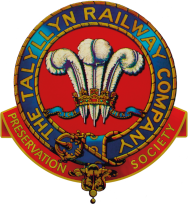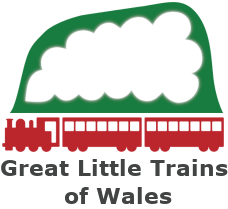After many years of hard work, the Slate Landscape of Northwest Wales has been designated a UNESCO World Heritage Site.
To celebrate this massive achievement, we ran a special slate train on the afternoon of 28 July 2021, shortly after the announcement of the successful bid. The Talyllyn Railway is named part of the new World Heritage Site, both as the first of the Welsh narrow gauge slate railways to be designed for steam haulage from the outset, and because of its pioneering role as the World’s First Preserved Railway.

The Railway’s General Manager, Stuart Williams, takes up the story of the special train.
“When the agenda of the UNESCO meeting was published it was realised that the announcement of success, or otherwise, of the Northwest Wales Slate Landscape bid would be made round midday on the 28 July 2021. It was therefore suggested that we ought to celebrate any potential success by running a special train which included some of our original and replica slate wagons and also our original brake van, hauled by one of our original locomotives No.2 ‘Dolgoch’.
The arrangements were made in secret in case it was thought we had any inside knowledge, but like everyone else we had to wait for the announcement on the day. The tension in the office increased during the morning, particularly when the live stream of the meeting went down, but fortunately it was back up in time for the announcement. Then we could give the go ahead for the train and get out the bunting and balloons to celebrate. This has been a long road and we would like to pay tribute to the team at Gwynedd Council for all their hard work during the long bid process.”
The Railway has been officially involved in the bid since 2015, after being approached to participate the year before. However, work on the bid process has been going on for the past fifteen years, headed by Gwynedd Council and a range of partners. The inscription recognises the role of the Welsh Slate industry in not only producing slate that has ‘roofed the world’, but also in developing innovative technologies, including narrow gauge railways, that have spread across the globe. It also recognises the role of the slate industry in preserving Welsh culture and language. The Ffestiniog Railway is also one of the key elements of the successful bid.
Ian Drummond, chair of the Talyllyn Railway’s Heritage Working Group, commented:
“This inscription is the end of a long road for everyone involved in the bid process. We are already seeing benefits, not only on the Railway but also in the local communities, as projects have been undertaken to emphasise, interpret and, in some cases, restore the heritage of the slate industry and its contribution to the history of the area. We are delighted to have played a role in the process so far, and the Railway will now be one of the main ‘hubs’ of the Heritage Site giving people the opportunity to understand more of the heritage and culture of this wonderful area.”
Anthony Coulls, Senior Curator of the Railway Museum, York, and also a long-serving volunteer on the Talyllyn Railway added:
“The recognition of the Talyllyn Railway’s role both as a pioneer narrow gauge slate railway and as the World’s First Preserved Railway is richly deserved. The Railway now takes its place alongside the Darjeeling Railway in India and the Semmering Railway in Austria as railways recognised as having World Heritage Status, something that will now also apply to the Ffestiniog Railway. This is therefore a day to be celebrated by all in the international Heritage Railway movement.”
The celebratory slate train ran from Wharf Station to Brynglas and back, carrying a special headboard which had been produced for the occasion by a local volunteer. No.2 Dolgoch was driven by James Foster, the fireman was Anthony Coulls with Ian Drummond guarding the train.


Background to the Slate Landscape of Northwest Wales bid
The Slate Landscape of Northwest Wales bid was first submitted to the Westminster Government’s Department of Culture, Media and Sport (DCMS) in 2009 when it was placed on the tentative list for submission to UNESCO by the UK government.
After a lengthy submission process, it was announced in 2018 that the slate landscape around Gwynedd will be the UK’s preferred nomination for Unesco World Heritage site status. The bid will be formally presented to Unesco in 2019 with a decision due two years later.
The bid was led by Gwynedd Council in partnership with Cadw, Amgueddfa Cymru – National Museum of Wales, Royal Commission on Ancient and Historical Monuments in Wales, Bangor University, The National Trust, the Slate Wales Partnership and Snowdonia National Park Authority.
The successful bid now means Wales has four UNESCO World Heritage sites. The other three are the Castles and Town Walls of King Edward in Gwynedd, the Blaenavon Industrial Landscape in South Wales and Pontcysyllte Aqueduct and Canal in Denbighshire.
For further information about this press release please e-mail: [email protected] or phone 01654 710472.








